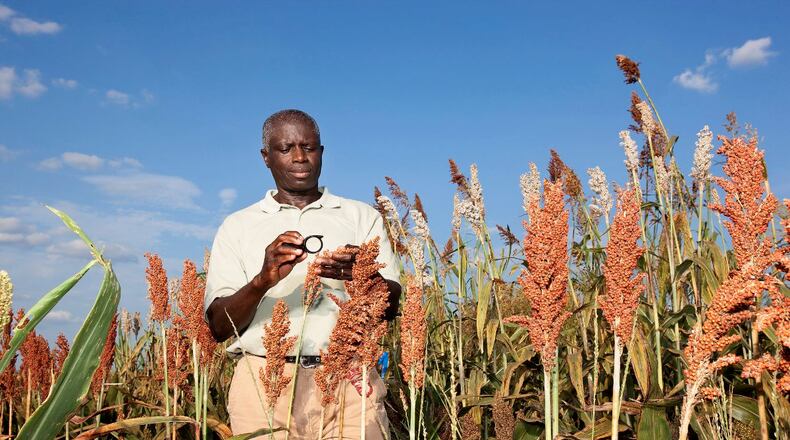Last year’s drought took a severe toll on Zack Rendel’s farm. Like many of the neighboring farms in his northeast corner of Oklahoma, his corn crop practically shriveled up due to the lack of moisture. During a normal year, he typically harvests about 150 bushels per acre of corn. Last year, he averaged only 22 per acre.
But there was one crop that suffered less. “It doesn’t take a whole lot of rain to make a good yield for the sorghum crop,” said Rendel, who plants about 1,000 acres of grain sorghum each year on his 5,000-acre farm. While he did lose some of his grain sorghum, or milo, to the drought, the loss was minimal compared to corn. “[Sorghum] helps offset our risk,” he said.
Farmers in drought-prone areas are increasingly relying on crops that require less water to help them adapt to the effects of climate change. The Great Plains is currently facing exceptional drought, and agricultural hub states like Nebraska, Kansas, and Oklahoma are dealing with long-term consequences. Sorghum is looking especially appealing as a solution.
As hot, dry summers become the norm, Rendel can’t rely on Mother Nature to consistently irrigate his crops.
Sorghum has multiple properties that make it drought tolerant. The leaves and stems of some sorghum varieties are coated in a waxy substance, an adaptation to low-moisture landscapes. It also has uniquely deep roots that can stretch up to 2.5 meters underground.
“It has a deep and fibrous root structure that really digs down to get that water,” said Adam York, sustainability director for National Sorghum Producers (NSP). Sorghum’s robust root system also gives it an ability to store more carbon deep in the soil than the average plant.
However, sorghum in the U.S. is primarily turned into ethanol fuel and livestock feed — two of the most fossil-fuel intensive agricultural products.
“If we grow double the acres of sorghum in America to feed more livestock, there is no way that is a climate-friendly approach,” said Silvia Secchi, a sustainability professor at the University of Iowa. While she supports the expansion of sorghum production in the U.S., Secchi said there has to be a systematic approach to ensure it has a net positive climate impact.
Animal agriculture contributes a significant amount of global greenhouse gases. Meanwhile, corn ethanol — which dominates the biofuel industry — is more emissions-intensive than traditional gasoline, and, furthermore, promoting biofuels ultimately delays the electrification of the U.S. transportation system, Secchi argued.
Sorghum requires less fertilizer than corn (resulting in fewer emissions of the powerful greenhouse gas nitrous oxide), and there is some evidence that suggests the production of sorghum ethanol might result in fewer overall emissions, but further research is currently underway at Kansas State University.
Sorghum production in the U.S. has fallen over the past decade, raising questions about its domestic market viability. But some foresee that trend reversing as the climate continues to dry out in certain agricultural regions.
About the Solutions Journalism Network
This story is republished through our partner, the Solutions Journalism Network, a nonprofit organization dedicated to rigorous reporting about social issues.
About the Author
Keep Reading
The Latest
Featured


